Rapid Changes to Global Water Cycle Imply Severer Floods, Droughts, Famines
By Dady Chery
Haiti Chery

Greenhouse gas emissions are still rising from most of the countries that have pledged to reduce emissions of these gases that cause climate change (Credit: Kimberly Deprey/istockphoto.com/Scientific American).
If we cannot quickly learn to imagine processes on a global scale despite the global consequences of our behavior, then we are doomed as species. Worse, we condemn to extinction the amphibians, bees, bats, polar bears, and many others who belong, together with us, to Earth’s current ecology.
On a global scale, even small percentage changes mean massive effects, with severe consequences for living beings.
How excessive is the human contribution to global warming? Think how much heat one needs to warm a small pot of water by one degree centigrade. Imagine the heat needed for a pot 10 times larger, a 100-liter drum and, finally, the Earth’s oceans. Now consider that, as a result of human activities, the surface temperatures over all the Earth (ocean surfaces, lower atmosphere, etc.) have risen 1 degree centigrade between 1980 and 2010.
Take the changes due to the evaporation from heating a small pot of water, condensation on the lid, and return of water to the pot, and also expand these changes to a global scale. It should become easier to see why warmer surface temperatures mean that storms will pack more water, and extremely damaging floods will become commonplace.
The recent article by Paul Durak and his colleagues is a harbinger of bad news on a global scale [1].
Ocean Salinities Reveal Strong Global Water Cycle Intensification During 1950 to 2000
ABSTRACT: Fundamental thermodynamics and climate models suggest that dry regions will become drier and wet regions will become wetter in response to warming. Efforts to detect this long-term response in sparse surface observations of rainfall and evaporation remain ambiguous. We show that ocean salinity patterns express an identifiable fingerprint of an intensifying water cycle. Our 50-year observed global surface salinity changes, combined with changes from global climate models, present robust evidence of an intensified global water cycle at a rate of 8 ± 5% per degree of surface warming. This rate is double the response projected by current-generation climate models and suggests that a substantial (16 to 24%) intensification of the global water cycle will occur in a future 2° to 3° warmer world.

Ocean surface salinity changes from 1950 to 2000. Regions more toward the red have become saltier, and regions more toward the blue have become fresher (Credit: P.J. Durack, et al. 2012. Science. DOI:10.1126/science.1212222).
This paper represents yet more confirmation that the effects of global warming are more rapid and severe than anticipated from scientific models. Other recent examples include melting of glaciers and calving of giant icebergs, both of which, incidentally, contribute to changes in the water cycle. The changes in ocean-surface salinity alone should logically lead to massive die-offs of sea creatures. The intensification of evaporation and precipitation over the Earth implies quite severe consequences for living beings, including famines, droughts, and general climate instability.

A schematic representation of the global water cycle, with the key roles of the ocean and surface rainfall and evaporation fluxes expressed (Credit: Durack et al. Science. 2012. DOI:10.1126/science.1212222).
Though the immediate emotional reaction is to ask how one might save the Earth for one’s grandchildren, I believe this question to be misguided. More to the point, especially in countries that are major world emitters of carbon (carbon dioxide and methane), is how we might return the human population to the numbers when our grandparents lived: before we began to subsist on fossil fuels.
According to Richard Harper’s classic essay “The Oil We eat”,
“we humans, a single species among millions, consume about 40 percent of Earth’s primary productivity, 40 percent of all there is. This simple number may explain why the current extinction rate is 1,000 times that which existed before human domination of the planet. We 6 billion have simply stolen the food, the rich among us a lot more than others.”
We have very little time. The next one-degree Celsius change in the Earth’s surface will occur in less than 30 years, since the Earth has become less reflective due to a massive loss of glaciers, and it is unlikely that civilization, as we know it, will tolerate a two-degree change. The Earth will manage fine. She is as robust as she is patient, and there will be many more millennia for another set of species. We, on the other hand must quickly adopt a new set of ethics founded on a broadened imagination. For us, this is do or die.
Reference
1. Paul J. Durack, Susan E. Wijffels and Richard J. Matear. Ocean Salinities Reveal Strong Global Water Cycle Intensification During 1950 to 2000. Science 27 April 2012: Vol. 336 pp. 455-458, DOI: 10.1126/science.1212222.
Source: Haiti Chery | Featured image: NASA Satellite image showing water-vapor distribution over Africa and the Atlantic on Sept 2, 2010.

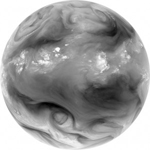
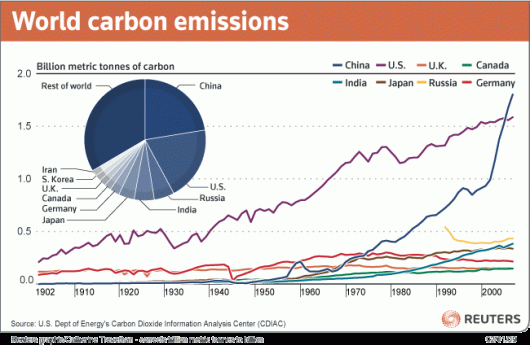
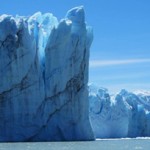



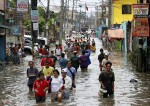
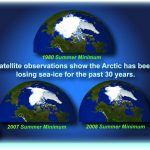
Comments
Rapid Changes to Global Water Cycle Imply Severer Floods, Droughts, Famines — No Comments